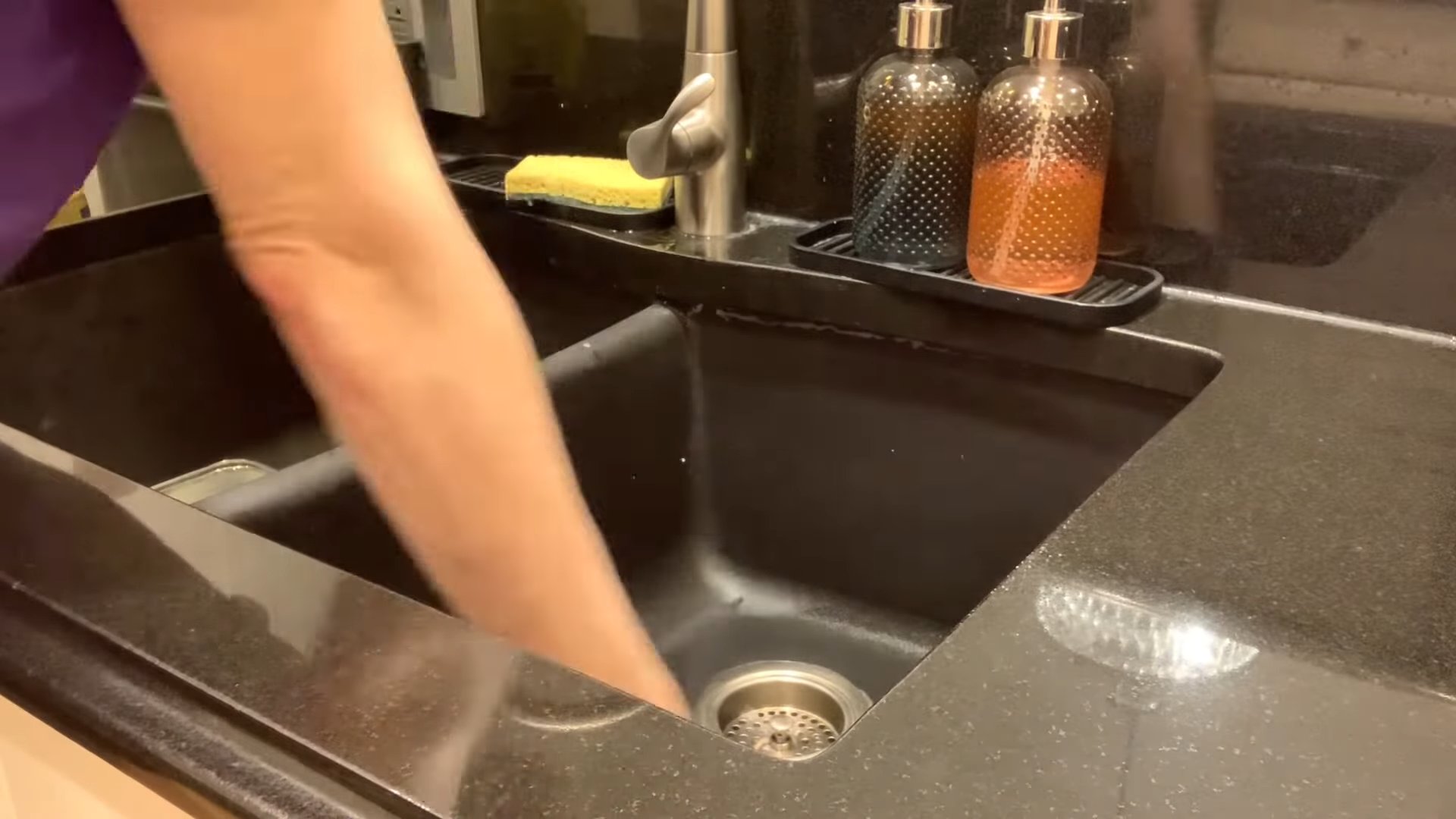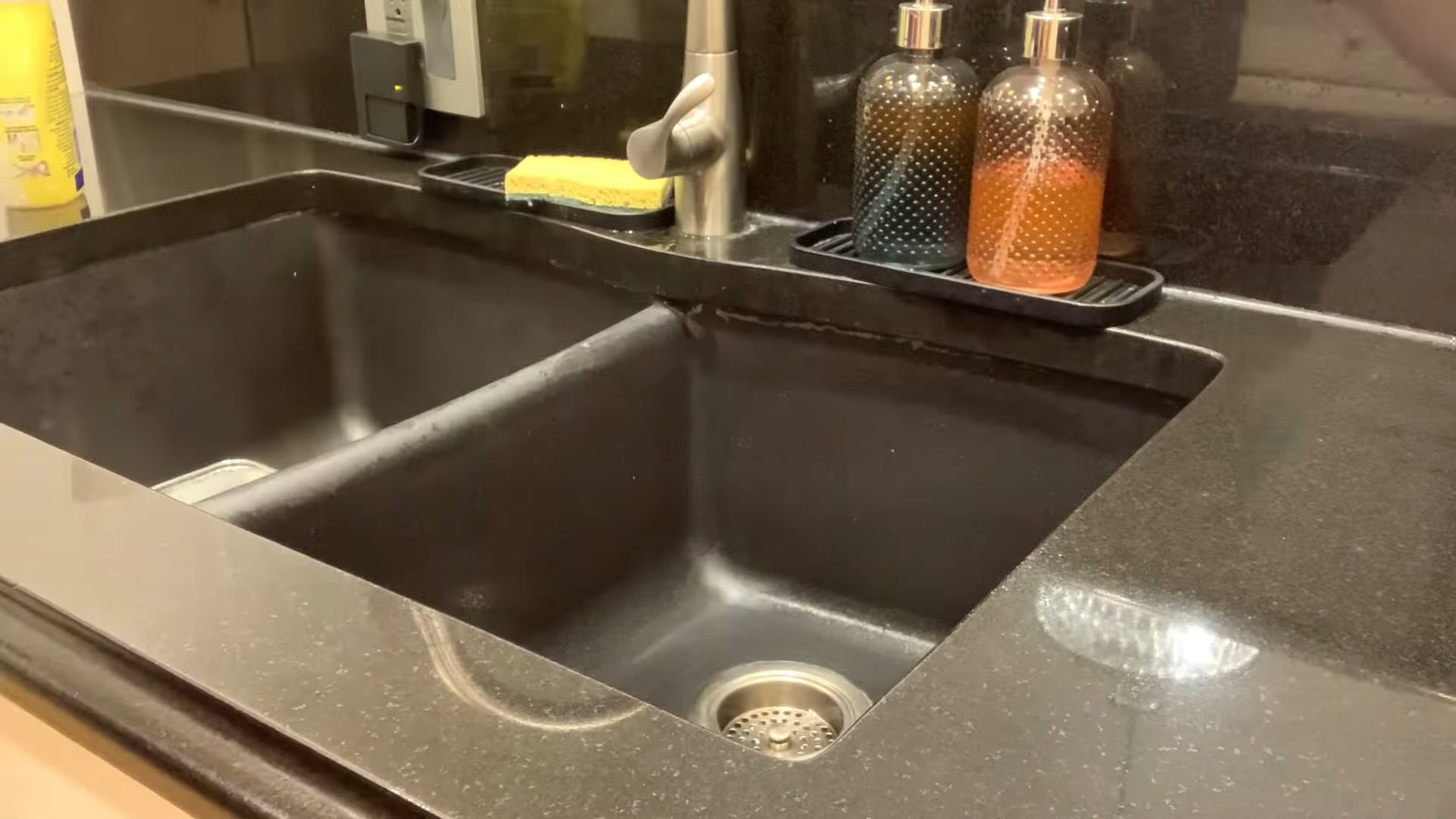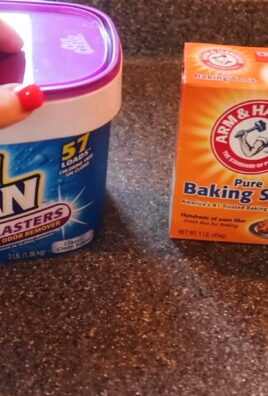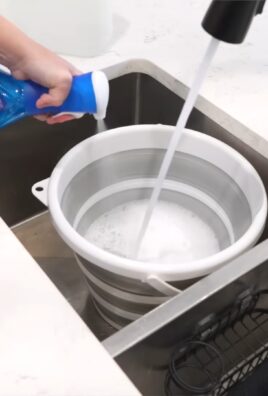DIY Vinegar Cleaner: Unlock the secrets to a sparkling home with a time-tested, eco-friendly solution! Are you tired of harsh chemicals and sky-high prices for cleaning products? I know I was! That’s why I’m so excited to share this incredible DIY trick that will revolutionize your cleaning routine.
Vinegar, a staple in kitchens for centuries, boasts a rich history that extends far beyond culinary uses. From ancient civilizations using it as a preservative to its widespread use as a disinfectant during the Middle Ages, vinegar has always been a go-to for its versatile properties. Think of your grandmother’s cleaning tips – chances are, vinegar was a key ingredient!
But why should you embrace DIY vinegar cleaner today? In a world increasingly concerned with sustainability and health, this simple solution offers a powerful alternative to commercial cleaners. Not only is it incredibly affordable, but it’s also non-toxic, biodegradable, and effective against a wide range of household grime. Plus, you can customize it with your favorite essential oils for a fresh, natural scent. Let’s ditch the chemicals and embrace the power of vinegar for a cleaner, greener home!

DIY All-Purpose Vinegar Cleaner: A Natural Cleaning Powerhouse!
Hey there, fellow DIY enthusiasts! Are you tired of harsh chemicals and sky-high prices for your cleaning supplies? I know I was! That’s why I’m so excited to share my go-to recipe for an all-purpose vinegar cleaner. It’s incredibly simple, budget-friendly, and surprisingly effective. Plus, it’s a much more eco-friendly option than many commercial cleaners. Let’s dive in!
Why Vinegar?
Vinegar, specifically white distilled vinegar, is a cleaning superstar. It’s a mild acid that can cut through grease, dissolve mineral deposits, and kill bacteria and mold. It’s also non-toxic and readily available. While the smell might take some getting used to, it dissipates quickly, leaving behind a fresh, clean scent (especially when you add essential oils, which we’ll get to!).
What You’ll Need:
Before we get started, let’s gather our supplies. This is a super simple list, so you probably have most of these items already!
* White distilled vinegar
* Water (distilled water is best, but tap water works too)
* Spray bottle (a clean, empty one, of course!)
* Essential oils (optional, but highly recommended for scent)
* Measuring cup or spoons
* Funnel (optional, but helpful for pouring)
The Basic Recipe:
The foundation of our all-purpose cleaner is a simple vinegar and water solution. Here’s the ratio I use:
* 1 part white distilled vinegar
* 1 part water
That’s it! Seriously! But we can customize it to make it even better.
Step-by-Step Instructions:
Okay, let’s get mixing!
1. Prepare Your Spray Bottle: Make sure your spray bottle is clean and dry. Any residue from previous cleaners could react with the vinegar, so a thorough rinse is important.
2. Measure the Vinegar: Using your measuring cup, pour one part white distilled vinegar into the spray bottle. For example, if you’re using a 16-ounce spray bottle, you’d add 8 ounces of vinegar.
3. Add the Water: Now, add one part water to the spray bottle. Again, if you’re using a 16-ounce bottle, you’d add 8 ounces of water.
4. Essential Oil Boost (Optional): This is where you can personalize your cleaner and make it smell amazing! I usually add about 10-20 drops of essential oils per 16-ounce bottle. Some of my favorite combinations include:
* Lemon and tea tree (great for disinfecting)
* Lavender and eucalyptus (calming and refreshing)
* Orange and clove (warm and spicy)
* Peppermint and rosemary (invigorating and cleansing)
Important Note: Be careful when using essential oils around pets, as some can be toxic. Always do your research before using them.
5. Shake Well: Put the spray nozzle back on the bottle and shake it vigorously to combine all the ingredients.
6. Label Your Bottle: This is crucial! You don’t want anyone accidentally using this cleaner for something else. Label it clearly as “Vinegar Cleaner” or “All-Purpose Cleaner.”
Using Your Vinegar Cleaner:
Now that you’ve made your cleaner, it’s time to put it to work!
* Countertops: This cleaner works wonders on most countertops. Just spray and wipe with a clean cloth. Always test in an inconspicuous area first, especially on natural stone surfaces like granite or marble, as vinegar can etch them over time.
* Sinks and Faucets: Spray and wipe to remove water spots and soap scum.
* Showers and Tubs: This cleaner helps prevent mildew and soap scum buildup. Spray after each shower for best results.
* Floors: Dilute the cleaner in a bucket of water (about 1/4 cup of cleaner per gallon of water) and mop as usual. Again, test in an inconspicuous area first, especially on hardwood floors, as vinegar can damage the finish.
* Windows and Mirrors: Spray and wipe with a microfiber cloth for streak-free shine.
* Appliances: Wipe down the exterior of your appliances with this cleaner to remove fingerprints and smudges.
Areas to Avoid:
While vinegar is a fantastic cleaner, there are some surfaces you should avoid using it on:
* Natural Stone (Granite, Marble, etc.): As mentioned before, vinegar can etch these surfaces.
* Waxed Furniture: Vinegar can strip the wax finish.
* Electronics Screens: The acidity can damage the screen.
* Unsealed Grout: Vinegar can break down the grout over time.
* Cast Iron Cookware: Vinegar can remove the seasoning.
Troubleshooting:
* Strong Vinegar Smell: Don’t worry, the smell will dissipate quickly. Adding essential oils can help mask the odor.
* Streaks on Windows: Use a clean microfiber cloth and make sure you’re not using too much cleaner.
* Cleaner Not Effective Enough: You can try increasing the vinegar concentration slightly, but be careful not to use it on sensitive surfaces.
Advanced Cleaning Power: Vinegar’s Secret Weapons
Okay, so we’ve covered the basics. But vinegar is so versatile! Let’s explore some more advanced cleaning hacks using our trusty vinegar cleaner.
De-Scaling Showerheads and Faucets:
Hard water can leave unsightly mineral deposits on your showerheads and faucets. Here’s how to tackle them with vinegar:
1. Bag It Up: Fill a plastic bag with vinegar.
2. Secure the Bag: Attach the bag to the showerhead or faucet using a rubber band, ensuring the showerhead/faucet is fully submerged in the vinegar.
3. Soak Overnight: Let it soak overnight.
4. Rinse and Shine: Remove the bag and rinse thoroughly with water. Wipe clean with a cloth.
Cleaning Your Microwave:
Microwaves can get pretty gross. This vinegar steam cleaning method is super easy:
1. Vinegar Solution: Combine 1/2 cup of vinegar with 1/2 cup of water in a microwave-safe bowl.
2. Microwave Magic: Microwave on high for 5-10 minutes, or until the solution boils and the microwave is filled with steam.
3. Steam Clean: Let the steam sit for a few minutes to loosen the grime.
4. Wipe Away: Carefully remove the bowl (it will be hot!) and wipe down the inside of the microwave with a clean cloth.
Freshening Your Dishwasher:
Dishwashers need a little love too! Vinegar can help remove buildup and odors:
1. Vinegar Bath: Place a cup of vinegar in a dishwasher-safe bowl on the top rack of your empty dishwasher.
2. Run a Cycle: Run a normal cycle.
Cleaning Coffee Makers:
Keep your coffee tasting fresh by cleaning your coffee maker regularly with vinegar:
1. Vinegar Brew: Fill the water reservoir with equal parts vinegar and water.
2. Brew Cycle: Run a full brewing cycle.
3. Water Rinse: Run two cycles with just water to rinse away any remaining vinegar.
Removing Hard Water Stains from Toilet Bowls:
Those stubborn hard water stains in your toilet bowl can be a pain. Vinegar to the rescue!
1. Vinegar Pour: Pour a cup of vinegar into the toilet bowl.
2. Soak and Scrub: Let it sit for several hours, or even overnight.
3. Scrub Away: Scrub with a toilet brush and flush.
Essential Oil Blends for Specific Cleaning Needs:
Want to tailor your vinegar cleaner to specific tasks? Here are some essential oil blend ideas:
* For Disinfecting: Tea tree, lemon, eucalyptus, thyme
* For Degreasing: Lemon, orange, grapefruit, lime
* For Mold and Mildew: Tea tree, clove, peppermint, lavender
* For General Cleaning: Lavender, rosemary, lemon, orange
Remember to always dilute essential oils properly and test in an inconspicuous area before using on delicate surfaces.
Safety First!
While vinegar is a natural cleaner, it’s still important to take some precautions:
* Keep out of reach of children and pets.
* Avoid contact with eyes. If contact occurs, rinse thoroughly with water.
* Never mix vinegar with bleach. This can create toxic fumes.
* Always test in an inconspicuous area before using on delicate surfaces.
I hope you found this guide helpful! With a little vinegar and some creativity, you can create a

Conclusion
So, there you have it! Ditching those expensive, chemical-laden cleaners and embracing the power of a simple, effective, and eco-friendly DIY vinegar cleaner is not just a trend; it’s a smart choice for your home, your wallet, and the planet. We’ve walked you through the easy steps, highlighting the versatility and cost-effectiveness of this homemade solution.
But why is this DIY trick a must-try? Beyond the obvious benefits of saving money and reducing your exposure to harsh chemicals, a vinegar cleaner offers a surprisingly effective cleaning power. Its natural acidity cuts through grease, grime, and hard water stains with ease, leaving surfaces sparkling and fresh. Plus, you have complete control over the ingredients, ensuring a truly customized cleaning experience.
Think of the possibilities! You can infuse your vinegar cleaner with different essential oils to create unique and uplifting scents. Lavender for a calming bathroom cleaner, lemon for a zesty kitchen spray, or tea tree for its antibacterial properties – the choice is yours. Experiment with different ratios of vinegar to water to find the perfect balance for your specific cleaning needs. For tougher stains, consider adding a tablespoon of baking soda to your mixture for an extra boost of cleaning power. Remember to test any new cleaning solution on an inconspicuous area first to ensure it doesn’t damage the surface.
This isn’t just about cleaning; it’s about creating a healthier and more sustainable home environment. It’s about taking control of the products you use and making informed choices that benefit both you and the world around you.
We wholeheartedly encourage you to give this DIY vinegar cleaner a try. It’s a simple, rewarding project that will transform your cleaning routine. Once you experience the effectiveness and versatility of this homemade solution, you’ll wonder why you didn’t make the switch sooner.
Don’t just take our word for it! We’re eager to hear about your experiences. Share your tips, variations, and success stories in the comments below. Let’s build a community of DIY enthusiasts who are passionate about creating a cleaner, healthier, and more sustainable world, one vinegar-powered spray at a time. What essential oil combinations did you find most effective? Did you discover any unexpected uses for your homemade cleaner? We want to know! Your feedback will help others discover the magic of this simple yet powerful cleaning solution. Let’s revolutionize cleaning, one spray bottle of DIY vinegar cleaner at a time!
Frequently Asked Questions (FAQ)
Is vinegar cleaner safe to use on all surfaces?
While vinegar cleaner is a versatile and effective cleaning solution, it’s not suitable for all surfaces. Avoid using it on natural stone surfaces like marble, granite, and limestone, as the acidity can etch and damage them. It’s also best to avoid using vinegar on waxed wood, as it can strip the wax finish. Exercise caution when using it on electronics screens, as excessive moisture can cause damage. Always test the cleaner on an inconspicuous area first to ensure it doesn’t cause any discoloration or damage. When in doubt, consult the manufacturer’s recommendations for cleaning specific surfaces.
What is the best ratio of vinegar to water for a DIY cleaner?
The most common and generally effective ratio is a 1:1 solution of vinegar and water. This works well for most general cleaning tasks. However, you can adjust the ratio depending on the specific cleaning job. For lighter cleaning, such as wiping down countertops or mirrors, you can use a weaker solution, such as 1 part vinegar to 2 parts water. For tougher stains or grime, you can use a stronger solution, such as 2 parts vinegar to 1 part water. Remember to always test the solution on an inconspicuous area first to ensure it doesn’t damage the surface.
What type of vinegar is best for cleaning?
Distilled white vinegar is the best type of vinegar for cleaning. It’s inexpensive, readily available, and has a high acidity level, making it effective at cutting through grease, grime, and hard water stains. Avoid using other types of vinegar, such as apple cider vinegar or balsamic vinegar, as they can leave behind a residue or stain surfaces.
How can I make my vinegar cleaner smell better?
The strong smell of vinegar can be off-putting to some people. Fortunately, there are several ways to make your vinegar cleaner smell better. The most popular method is to add essential oils. Lemon, lavender, tea tree, and eucalyptus are all popular choices that not only add a pleasant scent but also have antibacterial and antiseptic properties. Start with a few drops of essential oil per cup of vinegar solution and adjust to your preference. You can also infuse your vinegar with citrus peels or herbs for a more natural scent. Simply place citrus peels (lemon, orange, grapefruit) or herbs (rosemary, thyme, lavender) in a jar of vinegar and let it steep for a few days before straining and using the infused vinegar in your cleaner.
How long does DIY vinegar cleaner last?
DIY vinegar cleaner has a long shelf life due to the natural preservative properties of vinegar. When stored in a cool, dark place, it can last indefinitely. However, the scent of any added essential oils may fade over time. To ensure the best results, it’s recommended to use your DIY vinegar cleaner within a few months.
Can I use vinegar cleaner to clean my toilet?
Yes, vinegar cleaner is an effective and natural way to clean your toilet. You can pour a cup of vinegar into the toilet bowl and let it sit for at least 30 minutes, or even overnight, to help loosen stains and mineral deposits. Then, scrub the bowl with a toilet brush and flush. For a more powerful cleaning solution, you can add a cup of baking soda to the bowl after the vinegar has sat for a while. The combination of vinegar and baking soda will create a fizzing action that helps to break down stubborn stains.
Is vinegar cleaner safe for pets and children?
Vinegar cleaner is generally considered safe for pets and children when used properly. However, it’s important to take precautions to prevent accidental ingestion. Keep the cleaner out of reach of children and pets, and never leave it unattended. While vinegar is non-toxic, it can cause irritation if ingested in large quantities. If your pet or child ingests vinegar cleaner, contact your veterinarian or poison control center immediately. When cleaning surfaces that pets or children may come into contact with, rinse the surfaces thoroughly with water after cleaning to remove any residual vinegar.
Can I mix vinegar with bleach?
Never mix vinegar with bleach! This combination creates toxic chlorine gas, which can cause serious respiratory problems and even death. Always use vinegar and bleach separately, and never mix them together in the same container or cleaning solution.
What are some other uses for DIY vinegar cleaner?
Beyond general cleaning, DIY vinegar cleaner has a wide range of other uses. It can be used to:
* Deodorize your dishwasher: Pour a cup of vinegar into the bottom of your dishwasher and run a cycle.
* Clean your coffee maker: Fill the water reservoir with a solution of equal parts vinegar and water and run a brewing cycle. Then, run a cycle with plain water to rinse.
* Remove hard water stains from showerheads: Soak the showerhead in a bag filled with vinegar overnight.
* Clean windows and mirrors: Spray with vinegar cleaner and wipe with a clean cloth.
* Remove stickers and labels: Soak the sticker or label with vinegar and let it sit for a few minutes before peeling it off.
* Freshen laundry: Add a cup of vinegar to the rinse cycle to help remove odors and soften fabrics.
Where should I store my DIY vinegar cleaner?
Store your DIY vinegar cleaner in a labeled spray bottle in a cool, dark place, away from direct sunlight and heat. This will help to preserve the effectiveness of the cleaner and prevent the essential oils from degrading. Make sure the bottle is clearly labeled to avoid confusion with other cleaning products. Keep the cleaner out of reach of children and pets.




Leave a Comment